The Breman Museum Celebrates 25th Anniversary
From a 123-year-old bagel to a pioneer in cardiovascular medicine, the new exhibition highlights stories from the museum’s archives that represent iconic Jewish contributions to the modern South.
Robyn Spizman Gerson is a New York Times best-selling author of many books, including “When Words Matter Most.” She is also a communications professional and well-known media personality, having appeared often locally on “Atlanta and Company” and nationally on NBC’s “Today” show. For more information go to www.robynspizman.com.
In celebration of the William Breman Jewish Heritage Museum’s 25th anniversary, the exhibition “History with Chutzpah” shines a light on the most audacious, bodacious, purposeful individuals who have shaped our communities and left an impact on Jewish lives.
Leslie Gordon, the museum’s executive director, said, “The decision to create a major exhibition based on the holdings of our archive allows us to display the results of 25+ years of collecting and preserving real stories about real people, and to showcase these holdings in innovative, modern ways. ‘History with Chutzpah’ is an important exhibition that features stories from our very own Cuba Family Archives. The stories represent significant influences Jews have had on the modern South. By telling these stories, we give them life. There are 72 stories in the exhibition but thousands more in the archives. We hope visitors will want to learn more, visit the archive and tell their own family stories.”
In regard to opening night, which had been in the works for two years, Gordon said, “The Breman Museum’s 25th anniversary celebration scheduled for Sept. 19 was postponed due to the spike in the current Delta variant in recent weeks. After consulting with five different physicians and healthcare experts and following CDC guidelines, we were advised that holding an indoor event where food and drink would be served was inadvisable. The health of our patrons, friends and employees is our primary concern. We will reschedule this very special celebration as soon as we know we can be together safely.”
Gordon added, “There is genuine excitement in the Atlanta Jewish community and beyond for everything we have been doing — especially this 25th anniversary celebration. We surpassed all fundraising goals and most of the tickets are spoken for. We were all looking forward to getting together, reconnecting and celebrating our milestone anniversary and are extremely disappointed that we need to postpone. We are watching reports closely, staying in touch with medical personnel, and seeing how other organizations are responding to COVID before we set a new date. We will present many virtual events surrounding ‘History with Chutzpah’ and will continue producing for virtual and in-person audiences.”
Assigned to the task of curating the exhibit, seasoned professionals Sandy Berman and Jane Leavey spent thousands of hours and two years culling through the Breman archives. Leavey said, “‘History with Chutzpah’ is a major exhibition highlighting individuals with chutzpah. It takes chutzpah to leave your country for a new life, to change laws, cultures, for a better world, and these are the unforgettable stories.”
In recognition of this outstanding exhibit, the AJT spoke with Leavey to shed light on the luminaries, visionaries, newsmakers and leaders who have oozed chutzpah. See how you fare with our Jewish chutzpah challenge, “Bet You Didn’t Know!”
What’s Jewish about the Titanic?
According to Leavey, “Isidor Straus, a handsome, stately gentlemen, came to America as a young man and settled in Talbotton, Georgia in 1854. He and his brother went to New York, opened the china and glass shop at R.H. Macy & Co., and eventually bought Macy’s. He and his wife Ida were on the maiden voyage of the Titanic in 1912, and for those seeing the movie, there’s a scene in which a couple is on the deck of the ship as the ship is sinking. Ida gets in a lifeboat. Isidor allows a woman and child to go first, and Ida stands up and says, ‘If you’re not coming, I’m not going.’ In the last scene you see that they are in an ornate cabin room, holding hands as the Titanic sank. An oil portrait is on display at the museum, painted the year Isidor died in 1912.”
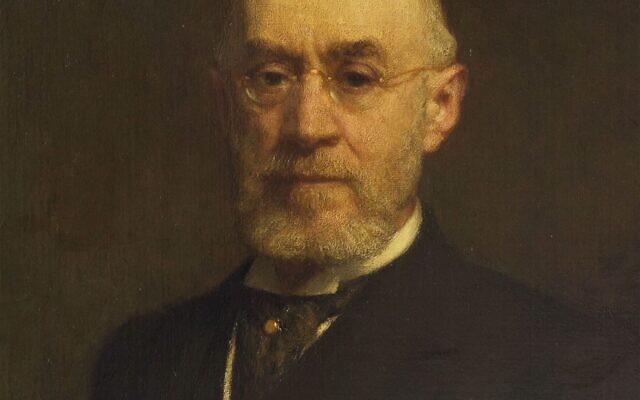
Which rabbi denounced segregation during a sermon in the Jim Crow South in 1947?
Rabbi Jacob M. Rothchild, born in Philadelphia, Penn. in 1911, earned his rabbinical degree at Hebrew Union College in Cincinnati. As early as 1947, Rabbi Rothschild denounced segregation in a sermon. His morning Yom Kippur sermon on October 7, 1954, titled “The Challenge of a Dream,” recognized that Jews suffered prejudice of their own and asked, “Shall we endanger our own safety by becoming involved in this larger struggle” [of the Civil Rights Movement]? His answer was a resounding “Yes!” Rothschild knew the tightrope he was walking in the Jim Crow South, and understood the danger, but also understood what was at stake if he were to do nothing.
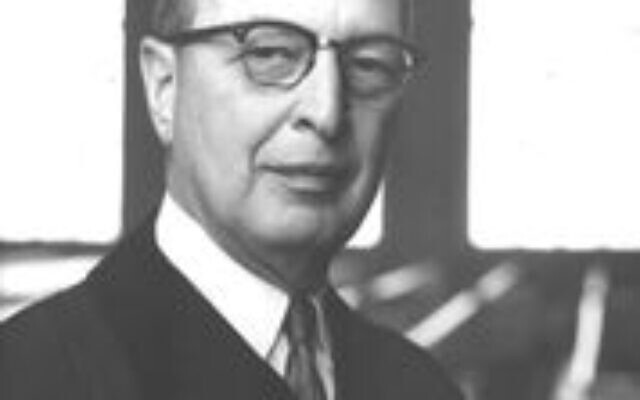
Did you know that some children traveled alone thousands of miles in transport to escape Hitler’s Germany?
Young Eva Judith Weisz Moray wore a sack around her neck that said ‘My name is Judith Moray. I am traveling to my mother in New York. I ask you ladies and gentlemen to help me as I am still small.’ Her mother, Sari Moray, survived WWII in a labor camp in Budapest, Hungary, and immigrated to New York. Because of visa restrictions, Eva was unable to leave with her. Mother and daughter were later reunited in New York.”
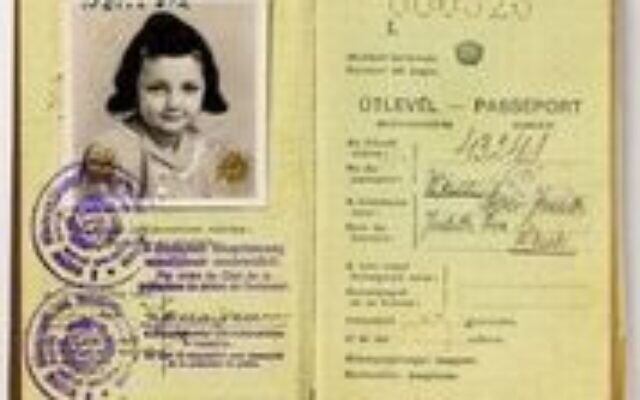
What was Jewish about the Blue Horse labels on your notebook paper?
Leavey shared, “The Montag Company was Jewish-owned and founded in Atlanta in 1889 by Sigmund Montag and his four brothers. We all used Blue Horse paper and notebooks, and each Blue Horse product had a label with a point value on it.
The more expensive the product, the more points the label was worth. You could save Blue Horse labels, and when you got enough points, you could send them in and Blue Horse would send you back a prize. If you saved 25,000 points, you got the grand prize — a bicycle.”
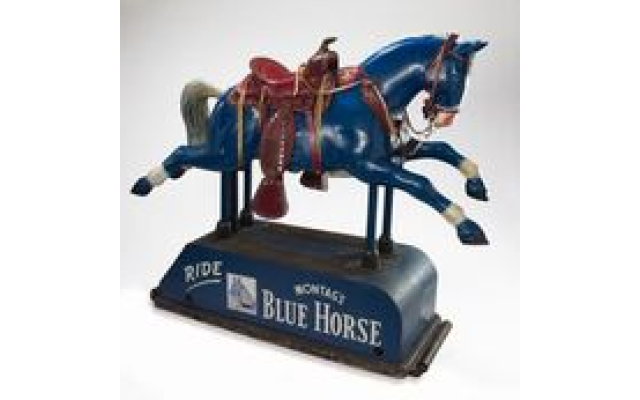
Which dentists challenged segregation laws and positively impacted integration?
Brothers Marvin and Irving Goldstein were Atlanta natives, successful dentists and real estate investors. Marvin was the first white dentist in Atlanta to integrate his office and care for Black patients on an equal basis. In the late 1940s, the brothers purchased the Peachtree Manor Hotel, and it later became the first integrated hotel in Atlanta.
Which woman, born in Atlanta in 1917, saved money and paid for her own flying lessons, learned to fly against her parents’ wishes, and ended up in the Women Air Service Pilots?
Evelyn Greenblatt Howren is the American aviator from Atlanta who was part of the first class of Women Airforce Service Pilots in World War II, and one of the first air traffic controllers in the U.S. Born in Atlanta in 1917, she took her first flying lesson in college and determined to fly against her parents’ wishes. Managing to pay for her own lessons, Howren secured her private pilot’s license in 1941 and joined the Civil Air Patrol in its first all-women’s squadron. In 1942, she entered the first class of Women Air Service Pilots (WASP), a civilian organization whose members were part of the United States federal civil service. She logged more than 3,000 hours of flight time, freeing male pilots for combat by testing and ferrying aircraft and training other pilots. In 1977, the WASPs were granted veteran status, and in 2009 were awarded the Congressional Gold Medal.
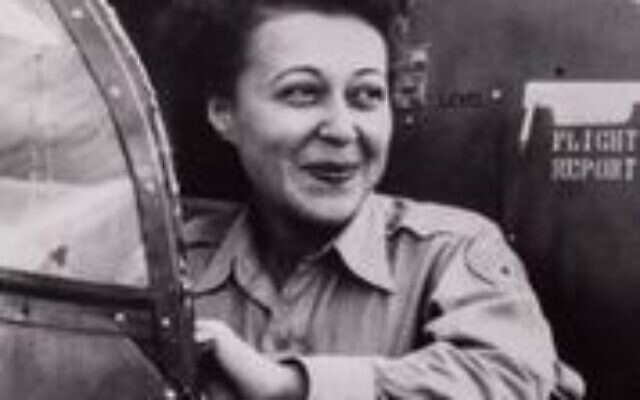
Who was the longest-serving juvenile court judge in the country?
Judge Aaron Cohn was born in Columbus, Georgia in 1916. Cohn grew up on a farm, graduated from the University of Georgia Law School in 1938, and volunteered for military service in 1940. A Combat Operations Officer in General George Patton’s 3rd Cavalry Group, he saw action in four major European campaigns, including the Battle of the Bulge. At war’s end, Cohn helped liberate the Ebensee concentration camp in Austria. He was 95 years old when he died in 2011, the longest serving juvenile court judge in the nation at the time.
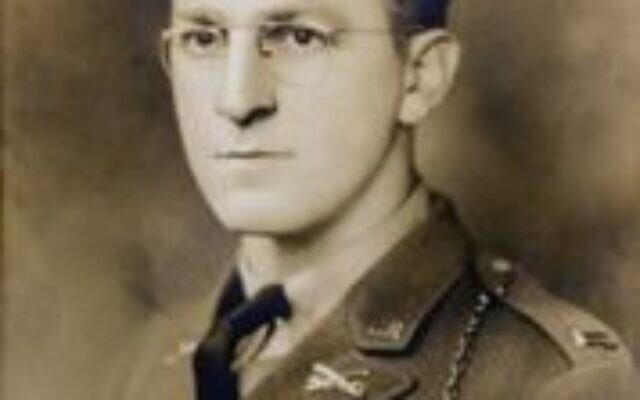
Name the Atlanta lawyer who won a huge measure of justice for the American Indian population.
Elliott Harris Levitas attended Emory University, then its law school, and his career included being a Rhodes scholar and a five-term U.S. congressman from Georgia’s 4th Congressional district. In 1999, he was asked to represent Elouise Cobell, a tribal elder and treasurer of the Blackfoot Nation, in a classaction suit on behalf of 500,000 Native Americans. The suit cited breach of trust and mismanagement of Indian lands and trust funds held by the United States since the 1880s. After more than 15 years of trials and appeals, the case was decided in the plaintiffs’ favor, leading to a $3.4 billion settlement, one of the largest class-action awards paid out by the government in United States history.

Which family treasure was passed down through six generations and is one of the oldest-known specimens of this type of item to date?
“Sam Greenblatt, Evelyn Greenblatt’s father, was 16 when he went to Cuba in 1898 to fight in the Spanish-American War,” Leavey said. “He lied about his age so he could enlist, and when he left, his mother stuffed his knapsack with homemade bagels. When he came home a year later, there was one remaining bagel. The family has passed that bagel down for six generations so far, and the bagel is in the exhibit. This story is one of how families value and keep treasures, repeat stories and hand them down. We are pretty sure it’s the oldest bagel in existence.”
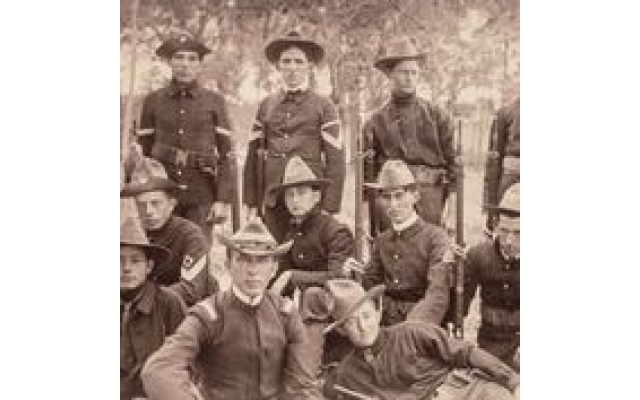
Which Jewish philanthropist has a building named in his honor at Grady Hospital?
Albert Steiner was born in Bohemia and immigrated to the U.S. in 1866. He moved to Atlanta in 1897, where he became president of the Atlanta Brewing and Ice Company. One of their original beers, the Steinerbru, was named in his honor. Steiner’s wife and son both died of cancer. In 1919, he died of the same disease. Upon his death, he left $500,000 to establish the Steiner Cancer Clinic at Grady Hospital. The clinic became a model for future cancer centers throughout the country. The Atlanta Journal-Constitution, in reporting Albert Steiner’s death, wrote that “he made the largest contribution ever left by a citizen of the State to the relief of suffering humanity.”
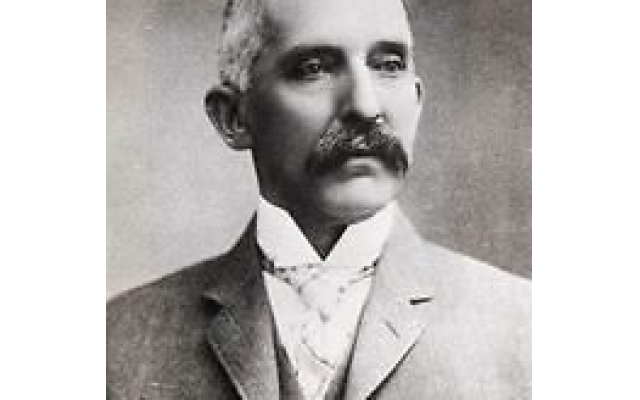
Which owner of a department store loaned the Atlanta City Council $654,000, and believed in the motto, “The customer is always right”?
“Rich’s was an institution for 138 years and it was the charismatic, friendly Mr. Walter Rich who walked around Rich’s Department Store and welcomed everybody. He was friendly, and Rich’s was the kind of store where you felt at home. The civic-minded Rich family contributed significantly to Atlanta’s early growth and success by becoming a leading commercial and cultural center in the Southeast. In 1914, when cotton prices fell, M. Rich & Brothers Company bought 5,000 unsold bales in exchange for merchandise. In 1930, Walter Rich loaned the city council $654,000 to help meet the teachers’ payroll. In 1945, Richard ‘Dick’ Rich, grandson of the founder, Morris Rich, opened the store’s safe on the Sunday before Labor Day to pay a detachment of troops at Fort McPherson whose funds were time-locked in the fort’s vault.”
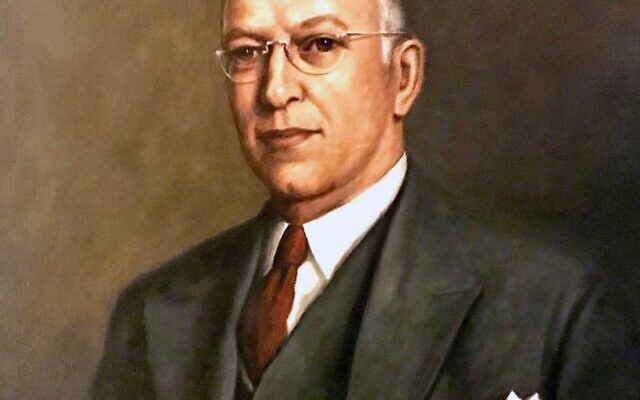
Which female physician fought for respect for all nurses and patients of Grady Hospital?
Dr. Nanette Wenger is a trailblazing medical leader in cardiovascular research and care in women, most recently honored by the American Heart Association (AHA). Dr. Wenger was the chief of the segregated Grady Hospital Clinic. Determined to change the clinic rules, she successfully persevered, even in the face of administrative push-back. The AHA recently announced the Dr. Nanette K. Wenger Award for Best Scientific Publication on Cardiovascular Disease and Stroke in Women to recognize and honor Dr. Wenger’s pioneering career in cardiovascular medicine.
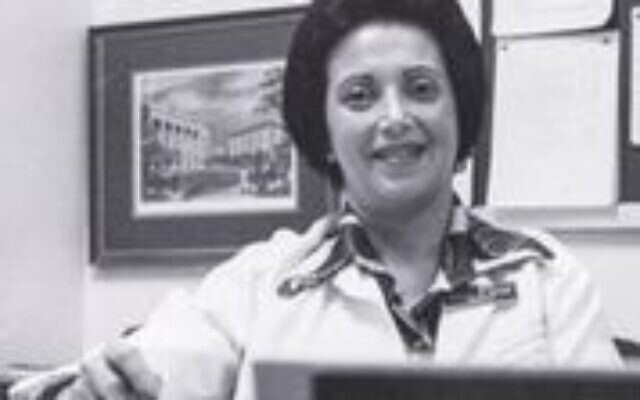
Which Atlanta Jewish woman is an advocate for women in the workplace, having worked at the White House during Lyndon B. Johnson’s term in office, where she helped to craft the president’s Committee on Equal Employment Opportunity, which dealt with race, gender, ethnicity and an equal work environment?
Atlantan Gail Evans worked at the White House and gained academic and legislative knowledge of gender and race issues in the workplace early on. She began working at CNN at its inception in 1980 and was named executive vice president of Domestic News Networks for the CNN Newsgroup in 1994. She was responsible for program and talent development of all domestic networks, overseeing national and international talk shows and the Network Guest Booking Department, which scheduled about 25,000 guests yearly. Evans retired from CNN in 2001 and remains active in many Georgia and national charities and political causes. She is the best-selling author of two books about women in the workplace, “Play Like a Man, Win Like a Woman” and “She Wins, You Win.” As a visiting professor at Georgia Tech’s School of Management, Evans taught courses on gender, race and ethnicity in organizational behavior.
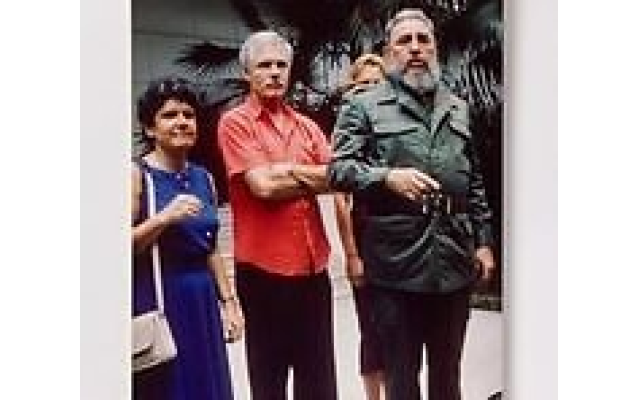
On a final note, Leslie Gordon said, “Chutzpah has several definitions. The one I like is … doing what you know you can do when others say you can’t. Often people say, ‘I can’t believe they did that’ – that means chutzpah has been achieved. Does the Breman have chutzpah? Yes, because 25 years ago Bill Breman thought that there was a need for a Jewish museum in Atlanta, so he started it. The Breman has chutzpah because during a global pandemic, we planned, designed, fundraised for and built a 21st century exhibition. The Breman has continued to collect stories and has added to our permanent collection to strengthen the archive in unprecedented times. That’s chutzpah! The Breman has chutzpah because during the pandemic we increased our audience base, completed the publication of two books, began a photography initiative and streamlined virtual programming. The Breman found the silver linings – and that’s chutzpah!”
“History with Chutzpah” will open on Sept. 26. Following safety guidelines, the museum is asking for reservations to be made online in order to limit the number of visitors at any one time. Check TheBreman.org for information and reservations.
- Robyn Spitzman Gerson
- Arts and Culture
- Community
- Breman Museum
- Leslie Gordon
- History With Chutzpah
- Delta variant
- CDC
- COVID
- Atlanta Jewish Community
- sandy berman
- Jane Leavey
- chutzpah
- Isidor Straus
- Macy's
- Titanic
- Talbotton Georgia
- R.H. Macy & Co. New York
- Rabbi Jacob M. Rothchild
- segregation
- sermon
- hebrew union college
- Cincinnati
- Philadelphia Pennsylvania
- Yom Kippur
- “The Challenge of a Dream"
- Jim Crow South
- Civil Rights Movement
- Sigmund Montag
- Blue Horse brand
- Atlanta
- Blue Horse
- Montag Company
- Jewish-owned
- Eva Judith Weisz Moray
- Nazi Germany
- Passport
- Budapest Hungary
- Labor Camp
- Marvin Goldstein
- Irving Goldstein
- Dentist
- Peachtree Manor Hotel
- Integration
- Women Air Service Pilots (WASP)
- World War II
- Evelyn Greenblatt Howren
- air traffic controllers
- Civil Air Patrol
- federal civil service
- Congressional Gold Medal
- Columbus Georgia
- Aaron Cohn
- General George Patton’s 3rd Cavalry Group
- juvenile court judge
- University of Georgia Law School
- Battle of the Bulge
- Ebensee concentration camp
- Elliott Harris Levitas
- Elouise Cobell
- Blackfoot Nation
- class-action suit
- Emory University
- Rhodes Scholar
- Georgia’s 4th Congressional district
- Native Americans
- Steiner Cancer Clinic
- Grady Hospital
- Albert Steiner
- Steinerbru
- Atlanta Journal Constitution
- Sam Greenblatt
- Cuba
- Spanish-American War
- Bagels
- Walter Rich
- Rich’s Department Store
- civic-minded
- M. Rich & Brothers Company
- Morris Rich
- Richard ‘Dick’ Rich
- Labor Day
- Fort McPherson
- Dr. Nanette Wenger
- cardiovascular medicine
- Women's Health
- American Heart Association (AHA)
- Gail Evans
- CNN
- Domestic News Networks
- Ted Turner
- Fidel Castro
- Havana Cuba
- White House
- Lyndon B. Johnson
- Equal Employment Opportunity
- Georgia Tech’s School of Management
- Austria
- Atlanta Brewing and Ice Company
- Secretary of the Interior
- Bruce Babbitt
- "Play Like a Man Win Like a Woman”
- “She Wins You Win"
- Arts



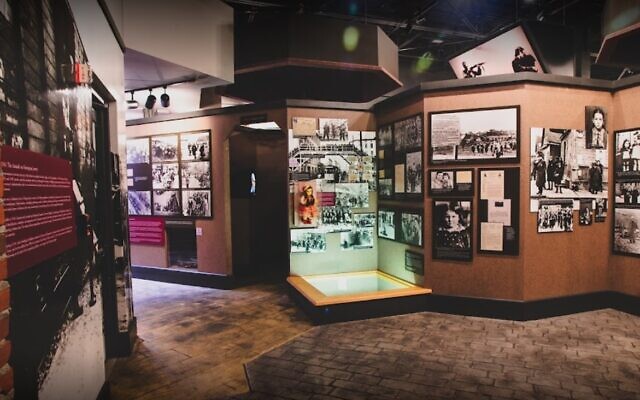


comments